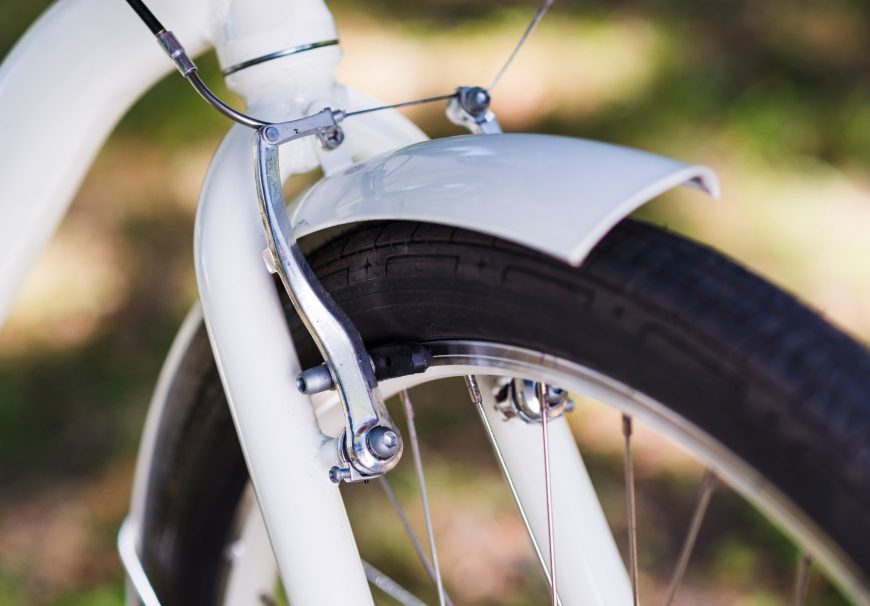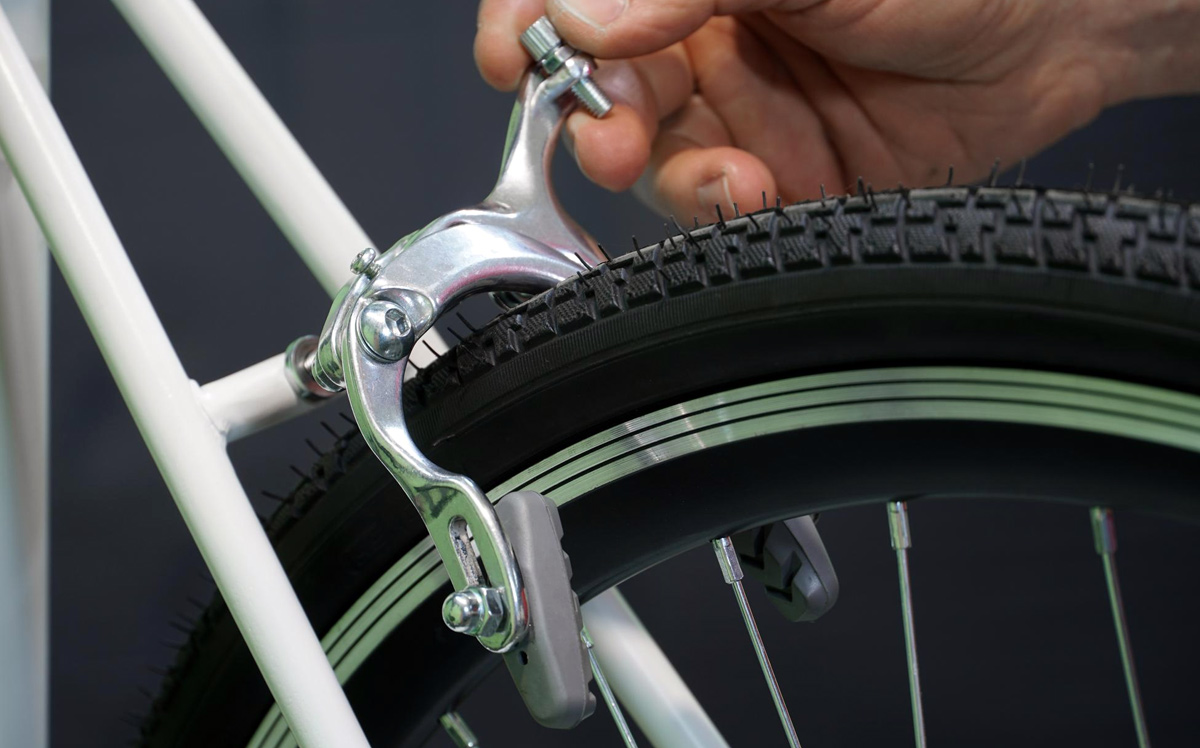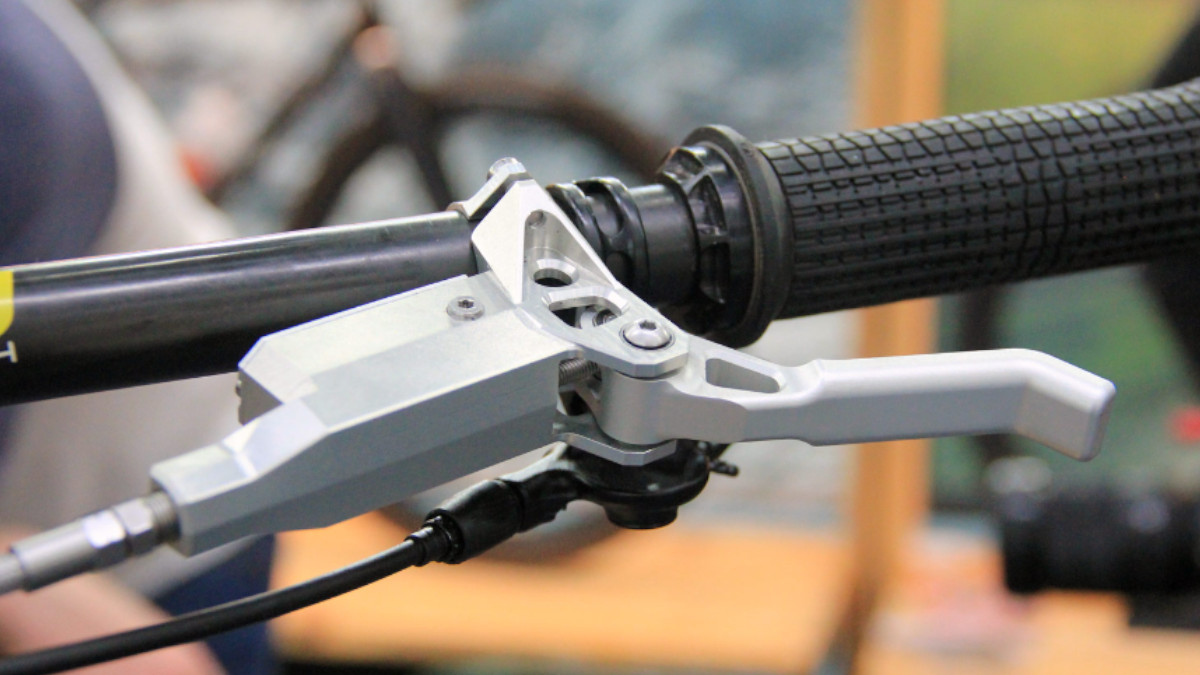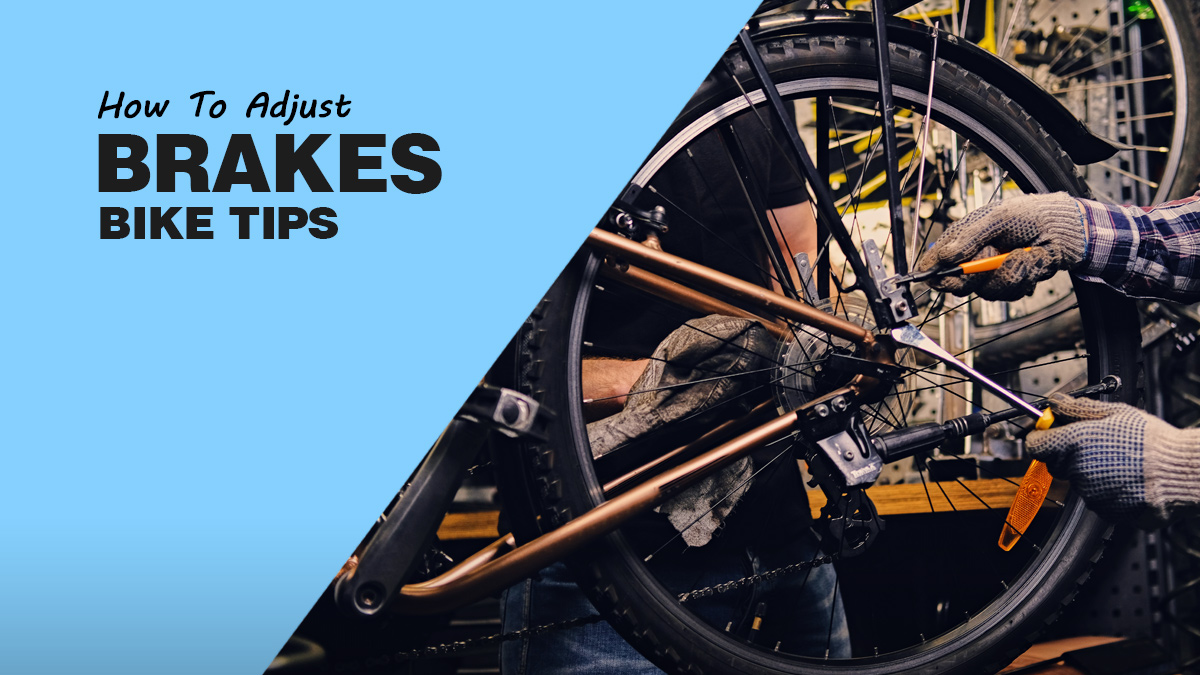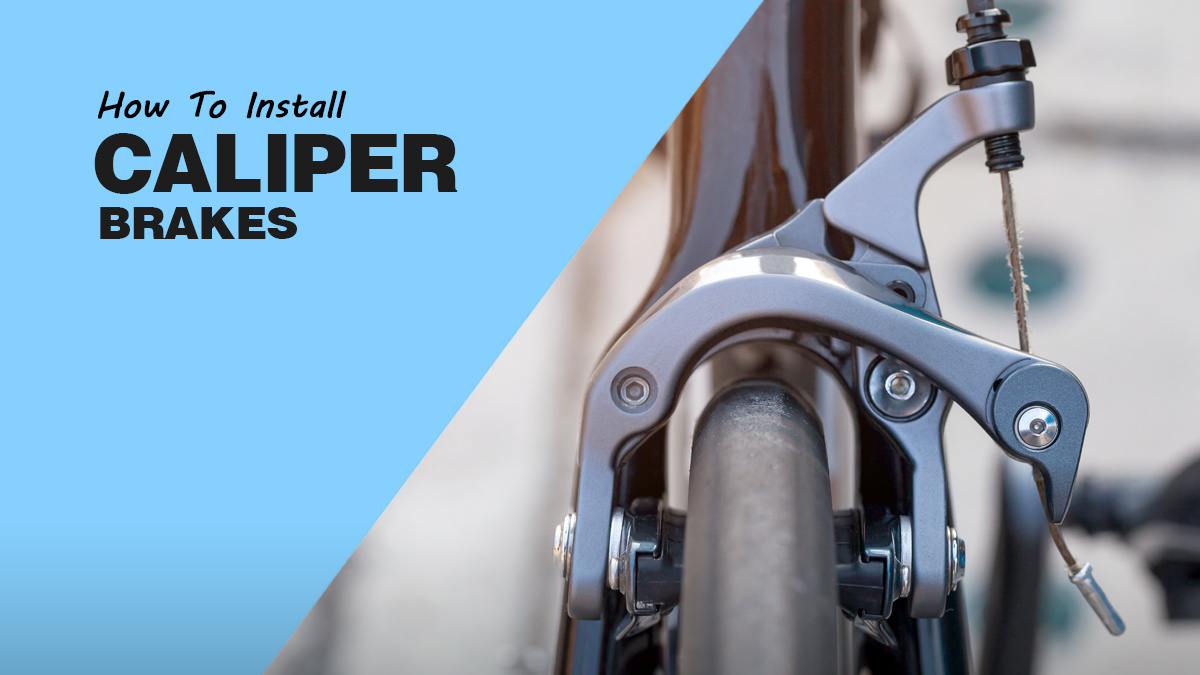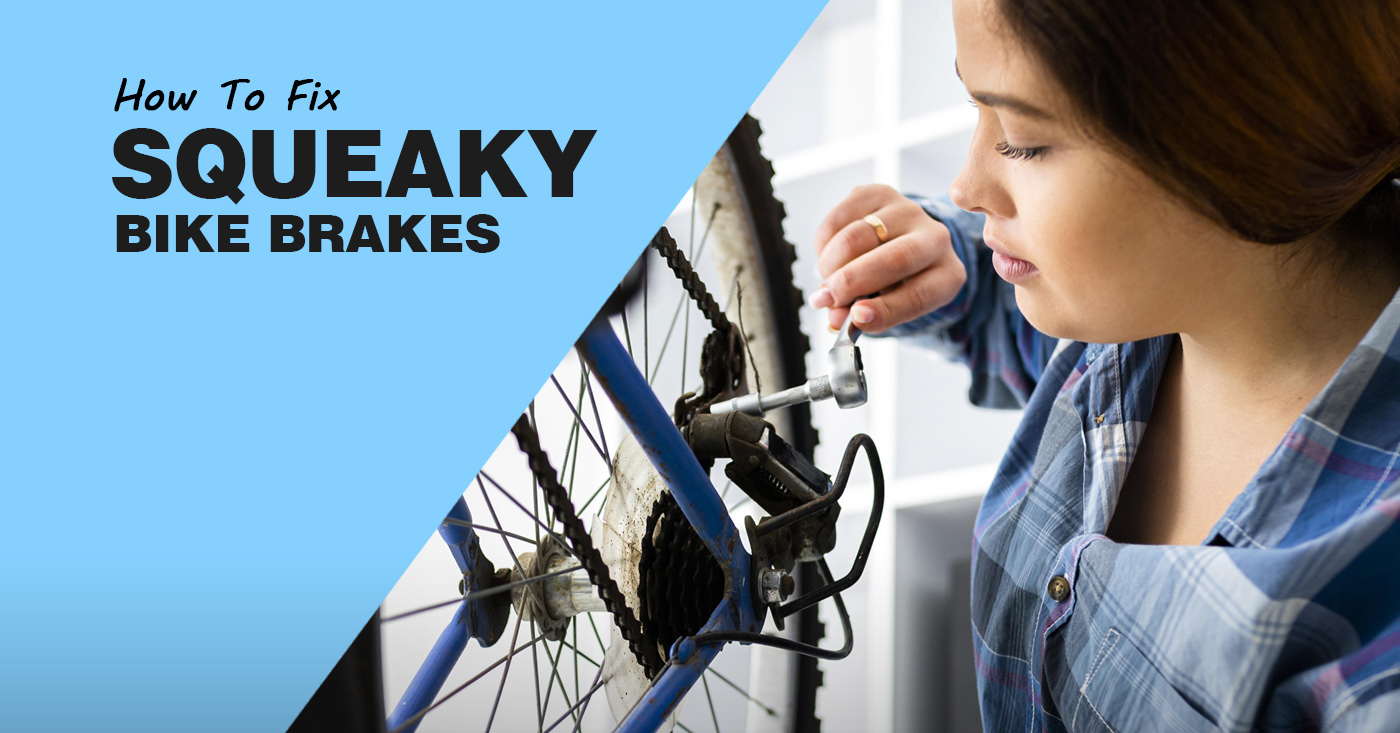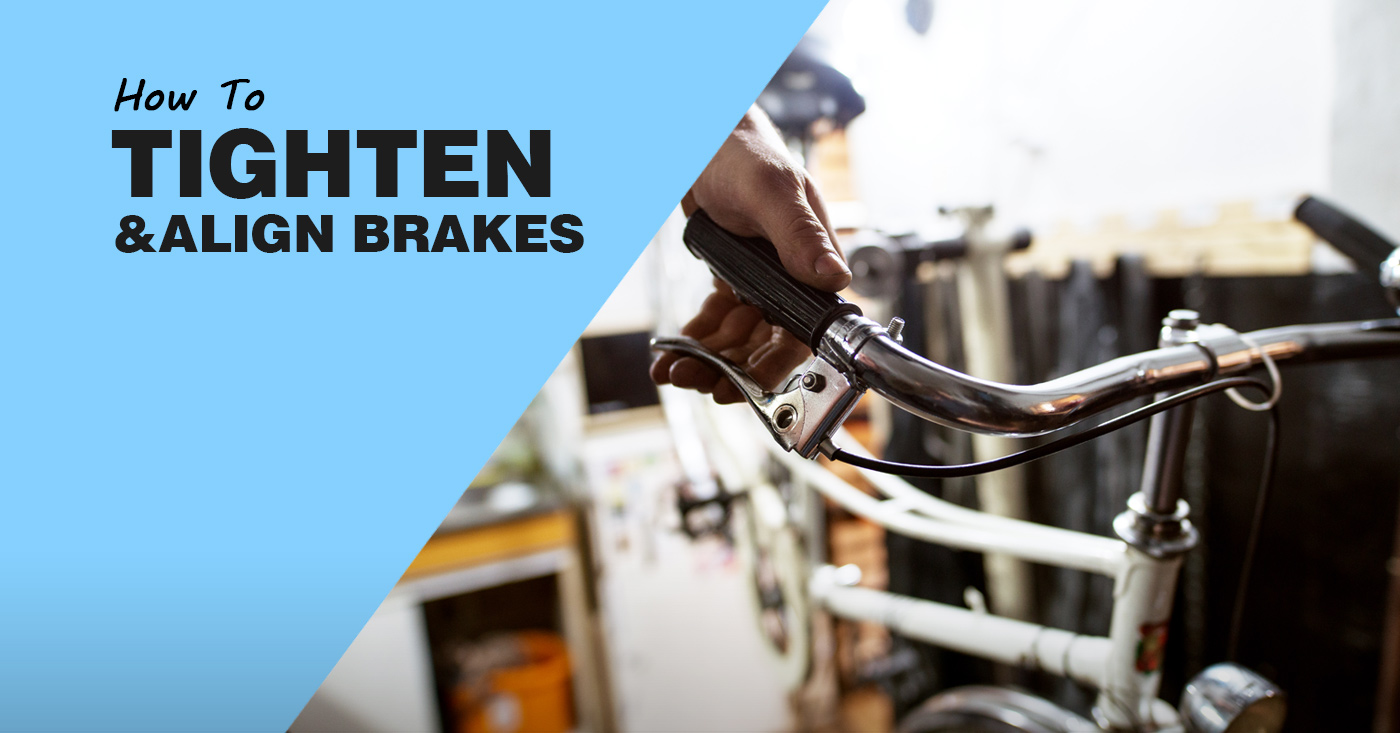A powerful braking structure in a bike will make you unstoppable, well not literally but in a figurative sense. When a bike is armed with powerful and responsive brakes, it is able to perform on any kind of terrain. Although there are a bunch of different brake systems, today we will be taking a detailed look into rim brakes: The Cantilever and V Brakes.
From a technical perspective, both of these brakes perform the same basic function but the execution is different, which makes them unique in their own sense to be precise. They also have some differences which might attract you towards them or make you look for another option.
Let me give you an overview, we know that these brakes perform the same basic function but both of them require different brake levers, brake pads, and even different cable management. Yes, there is a possibility to interchange some parts, you can even convert these brakes into one another but is that recommended? We shall soon find out!
What Are Cantilever Brakes: A Detailed Insight
In order to know which type of bicycle brakes are good for your cycling performance, we must first understand both of them in detail. Cantilever brakes are a form of rim brakes and you will find them in the following type of bikes:
- Cross-Country Touring Bikes
- Old Mountain Bikes
- Cyclocross Bikes
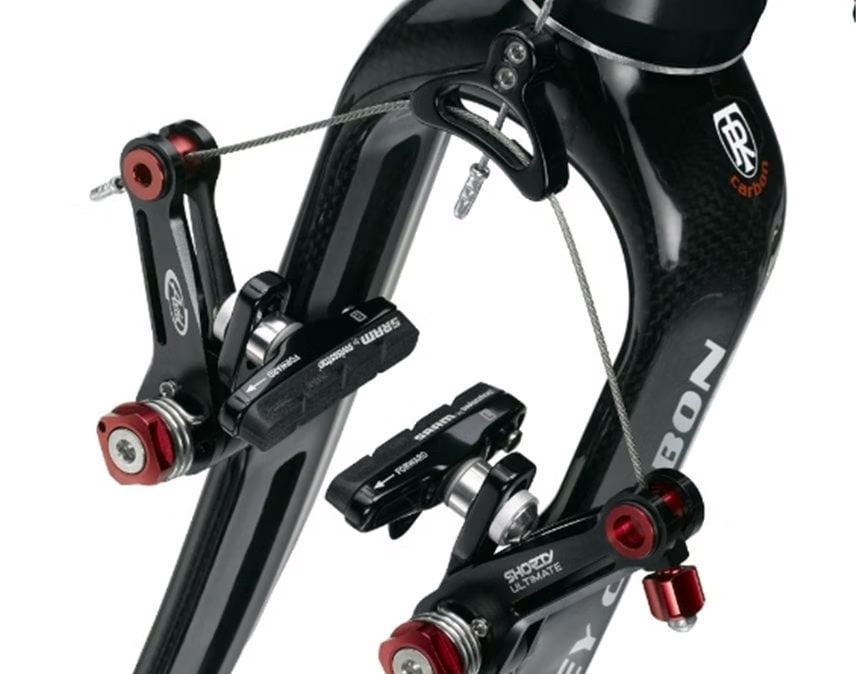
It varies from manufacturer to manufacturer if they want to install their bike with cantilever brakes or other brake systems, although chances are that you will find them more common in a mountain bike than any other sort of bike. Cantilever brakes are symmetrical in construction, they have identical brake arms and employ the usage of a center-pull mechanism.
How Do They Work?
There is a pulley system here, there is a pulley that is attached to a brake cable, then there is another cable that runs through the whole system and connects the two caliper brake arms, seems simple enough! In order to use the brakes, you have to squeeze them, when this happens, the caliper arms squeeze the rim braking surface which then results in the bike slowing down. It is a clean process, nothing too technical.
Advantages Of Cantilever Brakes
Cantilever brakes sound really good but how efficient are they? Here are some of the reasons why you should consider installing them.
We all know that Cantilever brakes are old, you will rarely come across a bike that is installed with these types of brakes but they do have specific advantages over V brakes.
They Have More Clearance
Cantilever brakes have more clearance, we are talking about the clearance between the brakes and the rim of the tire. This is great for a lot of reasons, especially when you are riding in the mud. With cantilever brakes, the mud will just pass underneath and sling off.
Seamless Adaptability
If you are planning on installing Cantilever brakes then we have some good news for you. These brakes can be easily used on the Shimano STI combined gear and brake levers on drop bar bikes, you won’t have any kind of problems there. Sometimes you might need a brake cable anchor bolt but that shouldn’t be a problem.
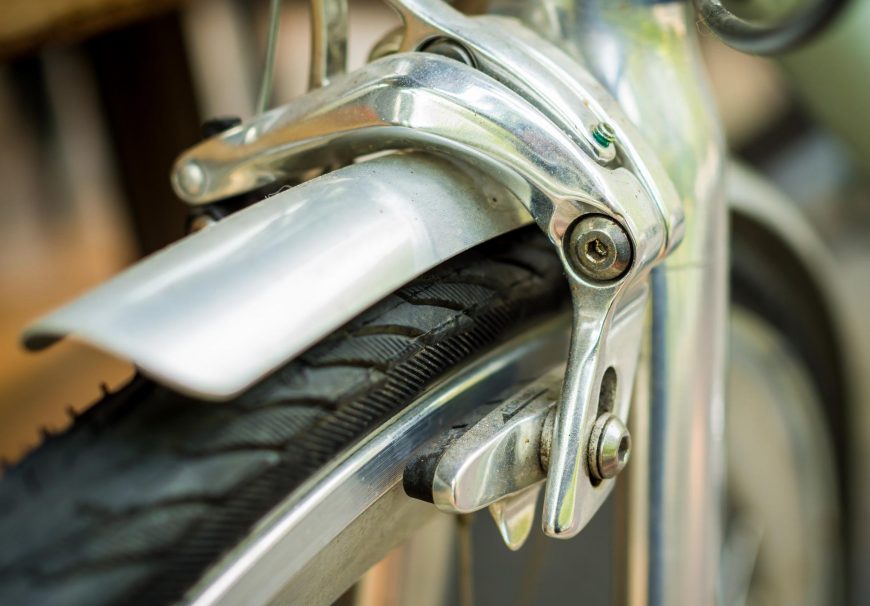
They Are Compatible With Different Tires Sizes
One of the really cool advantages of cantilever brakes is that they can be used with different tire sizes. Even a tire size like 700c by 23mm or 38mm will work without any problems.
They Are Maintenance-Free (Almost!)
Yes, we know that initially, cantilever brakes can be difficult to set up but once you have them installed, they require very minimal maintenance. You don’t even need to do a lot to keep them balanced.
Seamless Wheel Removal
If you have bikes with cantilever brakes then their wheels can be removed very easily, the problem arises when you have V brakes or any other sort of brake system.
Disadvantages Of Cantilever Brakes
While cantilever brakes are good enough, there are still some limitations that you need to consider. Here are some of the concerns with cantilever brakes.
They Have An Outdated Design
With each passing day, we are introduced to a new form of technology and in the bike industry, you need upgrades to perform better. Cantilever brakes are old and have an outdated design, they won’t work for everyone.
Difficult Installation
Since they have an older design, they are made up of several different parts which makes them hard to install and adjust. Brakes perform well when they can be adjusted easily, in the case of cantilever brakes, you could face this problem at one point.
Difficult To Align
This might be the biggest drawback of cantilever brakes, you will find them very difficult to align once they are installed. As you know, cantilever brakes don’t use any spring tension centering screws which makes them very difficult to align.
What Are V Brakes: A Detailed Insight
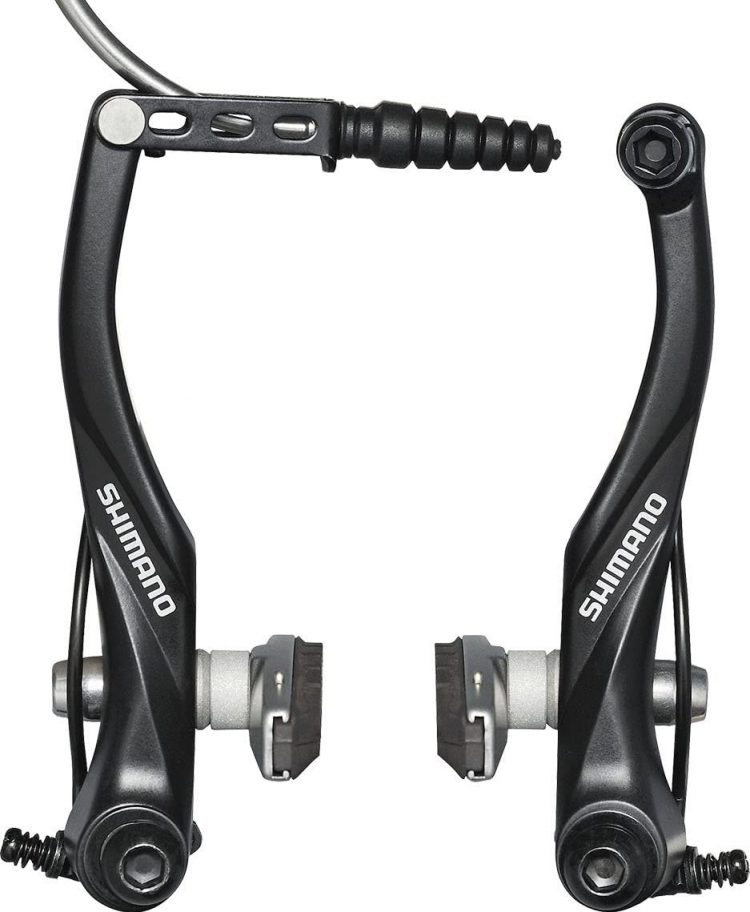
You might have seen different bikes that have V brakes installed, they are also called direct-pull brakes or linear-pull brakes. The construction of the V brakes is really unique, I have to say. This kind of brake system features a cable that is attached to one side and also connected to a noodle holder (A kind of metal tube).
We are not going to start the comparison of cantilever brakes and v brakes right away but we still need to clarify some aspects. As V brakes are new and feature a modern design, they are much easier to adjust which makes them user-friendly. Another great thing about them is that they are easy to squeeze which makes them very fun to use.
How Do They Work?
The attached cable travels over the bike tire where the brake cable and the anchor bolt are screwed, all of this is held in place by the brake arms. The noodle holder also has a rubber piece at the end of it which is called a boot. The main purpose of this boot is very simple, keep the dirt out of the noodle holder which results in the cable being clean. As this is a new kind of brake system, the mechanics are fairly simple, there are no complications involved.
Advantages Of V Brakes
V Brakes are great, they respond well and also feel cool to use. Here are some of the reasons why you should consider getting them.
They Are Very Easy To Adjust
The design and construction of the cantilever and v brakes are very different, I would personally go with the overall design of the v brakes if I had to choose for myself. Each of the wires of the v brakes can be tightened and adjusted separately with the screw on the cable mechanism. The brake pads of the v brakes are also fixed and held in place, also they do require multiple tweaks for the necessary adjustment. Still, it is an easy process if you compare it with cantilever brakes.
Note: No matter what kind of brake system you have, all the brake pads require adjustment if you want optimal performance. We would suggest that you keep the adjustment period from a few weeks to max a month, don’t be late than this. The brake pads can also work without the necessary adjustments but that isn’t how you should proceed. If you are in competitive racing then we would suggest that you adjust them before any big race event.
They Are Easy To Squeeze And Use
What is the point of an effective brake system if you can’t even use it properly? You will find V brakes very easy to squeeze and use, this is all because of their design. Even if you have cantilever or v brakes installed, they are capable of locking out the wheels. That’s why you have to really squeeze the brakes to operate them.
If you are an aggressive rider then this kind of brake will come really handy. You can still ride fast and brake instantly, and the bike will come to a halt. Even on hilly adventures, sometimes you are going uphill, sometimes you are coming downhill, and you need to have brakes that can be used quickly.
There are two other reasons why you should go for V brakes. If you are a big guy then the extra power of the v brakes will help you in your adventures, you will be able to stop instantly. Secondly, if you live in a city then the best choice to go for is v brakes, during the rush and busy hours, you will find v brakes to be a lot more helpful than other brake systems.
Disadvantages Of V Brakes
V Brakes also have limitations just as any other brake system, here are some of the concerns that you should be aware of.
They Require An Adapter For Usage
V brakes are great because they can give you a very powerful pull but there’s a catch. If you are planning on using them with a road bike lever then you need to install an adapter first, only then will the v brakes work properly.
They Are Not Aesthetically Pleasing
So the main thing about V brakes is that they are powerful enough to bring your bike to an instant halt but they are not aesthetically pleasing. Some people might like their design while some won’t.
Why Are V Brakes Called V Brakes?
If you take a very close look at cantilever brakes, they have a v shape where the top wires meet, shouldn’t they be also known as v brakes? Well, it is more technical than that. When you get to engage v brakes, they form an upside-down V. When they are not being used, they have an upside-down U shape. How does the U turn into a V then? When you apply the brakes, the top part of the brakes is drawn together, this makes the top part to shorten, which turns the U into a V.
Should You Get V Brakes?
This is a really tough question that we get asked frequently, and although the decision will vary according to your own personal preferences, we want to clear the air for you. You won’t know how good a brake system is until you actually try it out. Since V brakes are new and have a modern design, we understand why they are so popular.
V brakes are easily the best type of rim brake, period. They are easy to squeeze and use and can also be adjusted without any hiccups making them a superior choice over caliper brakes. Still, they are not the ultimate choice for you, you can always go for disc brakes. These are the most powerful form of brake system and perform exceptionally well under any weather condition. You can either go with hydraulic rim brakes or hydraulic disc brakes.
Yes, the price difference between these two brake types is a lot but you have to pay a premium price if you want the best product. Seemingly, if you have a high-end bike then it won’t be a problem going with disc brakes, they won’t set you back as much. In the end, the performance of your bike should matter, you don’t get to make these huge investments daily.
- Set Of Premium V Brakes: $30
- Set Of Premium Disc Brakes: $100
Cantilever Brakes Vs Disc Brakes Vs V Brakes: What Are The Key Differences
Now that you know all about the different brakes, it is time for the final showdown. We will now discuss all the critical aspects of the cantilever, disc, and v brakes.
Difference In Mechanical Advantage
When we talk about mechanical advantage, what do we really mean? A mechanical advantage in brakes refers to as leverage, this has the same concept as tools. Leverage and tools are directly related to each other, here’s how. A tool is there to amplify the user’s force, so the more force a tool amplifies, the more powerful the leverage will be as a result. How does this concept apply to brake systems?
You can easily adjust the cantilever brake for an increased or decreased mechanical advantage. In order to do that, you have to alter the length of the cable and the pulling angle, frustrating work but it gets the job done. V brakes on the other hand have a fixed mechanical advantage, there is no changing it. Even though it is fixed, it is very powerful from the get-go. You just have to gently squeeze the lever and it will get the job done.
Disc brakes are the most powerful type of brake system, they are fast and they are responsive.
Mechanical Cable Pull
This is something that is common in both cantilever and v brakes. Both of these brakes are cable-actuated, if you want you can still get hydraulic rim brakes.
Brake Pads And Levers
Due to differences in the mechanical advantages, both cantilever and v brakes use different brake pads and levers. Both of their brake pads and levers are unique so don’t think about interchanging them. In the case of cantilever brakes, you will have to attach a smooth post to the brake arms via bolts and washers.
V brakes require a whole attachment system which is used for angle modification.
Mounting Bosses
Mounting bosses are also known as braze-one, you don’t have to worry about those because they are interchangeable between cantilever and v brakes. Although if you happen to have a relic touring bike from the 1980s then we would suggest getting a separate mounting boss for that.
Operation
At the start of this guide, we told you that the main operation of the cantilever and v brakes is the same, they work in the same way. The whole system works like this: You pull the brake levers, which then rotate the brake arms to grab hold of the rim. It is actually the pressure of the brake pads on the rim that brings your bike to a halt. When we let go of the brake levers, the brake arms retract to their original position via powerful springs, this makes you go faster than before.
Tire Clearance
Tire clearance means how much space there is between the tire and brake of the bike, but also other parts. The lesser space there is, the better it is. The cantilever brakes have less tire clearance when we compare them with the v brakes. This helps in protecting the construction of the bike against mud, debris, and other foreign particles. Lesser tire clearance isn’t all good though, it also means that you will have limited options while changing the tires.
Brake Shifters And Other Adjustments
Brake shifters and other kinds of adjustments are something that you have to consider when installing the different brake types. Cantilever brakes are compatible with touring and cyclocross bikes. V brakes don’t offer this kind of compatibility, although there are special adapters for that. Then again, those special adapters are hard to install and result in poor tire clearance.
Auto-Adjustability
While both the cantilever and v brakes need to be manually adjusted, disc brakes automatically adjust as the brakes wear down. This saves you a lot of time and also makes riding more effective.
Working Under Different Weather Conditions
Disc brakes are the best choice to go for because they work perfectly in any weather condition. These brakes are actually meant to be shielded and compact, which differentiates them from the cantilever and v brakes.
Converting and Interchanging The Different Brakes
Since both cantilever and v brakes work the same way, can you convert one brake system into the other one?
Watch: Converting From Cantilever To V Brakes
Watch this insightful video to find out how you can convert from cantilever to v brakes. It is easy to replace cantilever brakes, all you have to do is just follow the instructions.
Converting From V Brakes To Cantilever
This is the part where it gets really tricky, you can’t easily convert from v brakes to cantilever. You need to have a cable hanger installed over the frame of the bike. What you can do for the front brake is add a cable hanger that is attached right to the fork. For the back brakes, you will have to install an adapter to the seat post.
Important Note: For the cantilever brakes, you will also need a special lever with a lower mechanical advantage to move the brake arms.
Recap
- Cantilever Brakes: Simple and Light Cantilever brakes have a straightforward design, with two separate arms that attach to the frame or fork. This simple construction results in a lighter weight system, making them a popular choice for weight-conscious cyclists.
- V Brakes: Powerful and Efficient V brakes, also known as linear-pull brakes, offer better stopping power due to their increased mechanical advantage. This makes them a popular choice for mountain bikes and other heavy-duty bicycles that require strong and reliable braking performance.
- Cantilever Brakes: Easy to Adjust One advantage of cantilever brakes is their ease of adjustment. Their simple design makes it relatively easy to fine-tune the brake pad position and cable tension, ensuring optimal braking performance.
- V Brakes: Better Modulation V brakes provide better modulation, which means that the cyclist can apply varying levels of braking force more accurately. This improved control helps riders maintain traction and avoid skidding, especially in wet or slippery conditions.
- Cantilever Brakes: Compatible with Narrow Frames Cantilever brakes can be mounted on narrow frames and forks, making them suitable for a wider range of bicycles. This compatibility is particularly useful for touring bikes or older road bikes with narrow frame clearance.
- V Brakes: Easier to Install and Maintain V brakes are generally easier to install and maintain compared to cantilever brakes. Their single-arm design reduces the number of components, making them less prone to mechanical issues and simplifying the installation process.
- Cantilever Brakes: Better Mud Clearance Cantilever brakes often have better mud clearance compared to V brakes. This makes them a popular choice for cyclocross and off-road riding, where mud and debris can accumulate on the brakes and affect performance.
- V Brakes: Wider Tire Clearance V brakes typically offer wider tire clearance, allowing cyclists to use larger tires for added comfort and traction. This feature is particularly beneficial for mountain bikers and adventure cyclists who require wider, more aggressive tires.
In conclusion, Cantilever and V brakes may appear similar, but they do have distinct characteristics that set them apart, both have their unique advantages and drawbacks. Although there are some key aspects that will steer you to either side, which is why we wanted to give you a brief overlay of the different brake systems. Both of these systems require a different brake lever and a brake pad but that shouldn’t be a problem.
Cantilever and V Brakes are good in their own regards, while one is easy to adjust, the other one has better tire clearance. In the end, it only matters to you what kind of brake system will fit perfectly according to your needs. Choosing the right one for your bike depends on factors such as weight, braking power, compatibility, and the intended use of the bicycle. Analyze your specific needs and preferences to make the best decision.
Yes, V brakes are more popular because of their modern design, cantilever brakes are simple and the best kind of brakes are disc brakes. We hope that with the features that have been laid out for you, the final decision will be easily made. Do you have specific questions about these brake systems? Let us know in the comments below!
Watch: V Brakes Vs Cantilever Brakes
Do you still have lingering questions about cantilever and v brakes? Watch this helpful video!
Also Read:
- Do Your Bike Brakes Squeak? Here’s How You Fix Them!
- How To Easily Adjust Your Bike’s Brakes – Bike Maintenance Tips
- How To Install Caliper Brakes On Bike
- 7 Reasons You Should Go For Mountain Bike Disc Brakes
Should you have any questions or require further clarification on the topic, please feel free to connect with our expert author Rhodes Perry by leaving a comment below. We value your engagement and are here to assist you.


